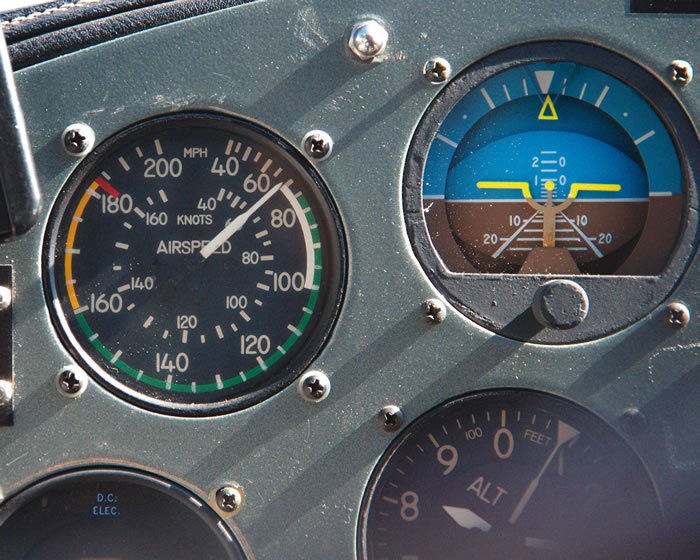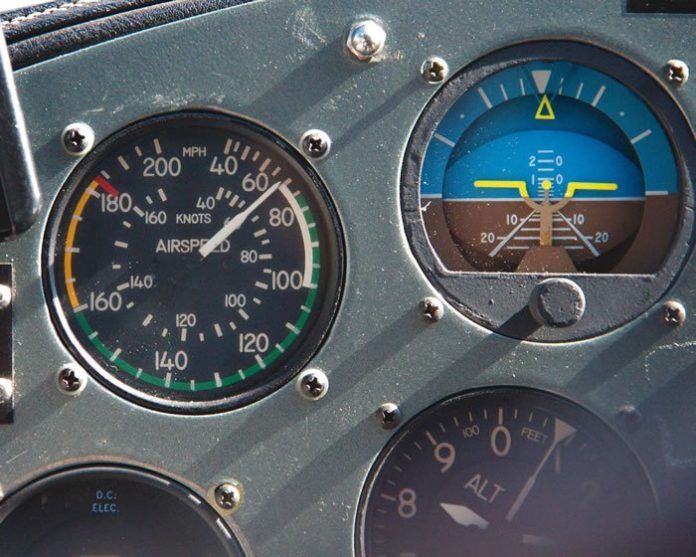My 1954 Cessna 180 was mostly stock when I bought it. That didnt last long. I quickly added a STOL kit, wing extensions and bigger tires. As a result, the stall speed went down, useful load went up and, to a degree, the pilots operating handbook, POH, became a work of fiction because it no longer matches the actual airplane. This outcome is not uncommon.
Much of todays GA fleet consists of stock airplanes that have undergone substantial modifications over the years. Prospective buyers can peruse numerous planes of the same model year all they want, but they rarely will find two with the same airframe. Changes can include-but are not limited to-additional fuel capacity, turbocharging, STOL kits, vortex generators and many, many more. These modifications all have one thing in common: They will fundamentally change the airplanes performance.

Options
Some mods, like my folding seats, dont affect performance much. Others will change it substantially, like the 18-inch wing extensions that give me an additional 400 pounds of useful load (though just six inches of clearance when getting my planes 39-foot wingspan through my 40-foot hangar opening).
The crux of the matter is understanding what added non-stock features will change. The answer is nearly everything. All of the major flight parameters that matter are subject to change-lift, drag, power, stall speed and center of gravity (CG), as well as the acceptable CG envelope. Because they all can be modified, it behooves the pilot to understand the non-stock features of an aircraft as part of your familiarization flight.
Unless you are flying a newer one, chances are the plane you plan to fly has some combination of non-stock features with either Form 337 or supplemental type certificate (STC) entries as part of its paperwork. It is always a good idea to read through the logs (or build history) to help you suss out any changes and think about how they might affect flight performance. A thorough reading and evaluation will enhance the safety of your flight and provide you more full enjoyment of the airplane. After all, what good is a rocket launcher or ejection seat if you had no idea it was there?
What the plane wont have is a guidebook explaining what any changes actually mean to you as a pilot. With that in mind, lets look at a few of the major gotcha modifications that can affect flight performance.
Wrong Airspeeds
Airspeed indicators are prone to less-accurate readings at low speeds. This is due to the pitot tube being at a high angle of attack, which reduces the effective ram-pressure when compared to an alignment parallel to the airflow. My Cessna 180 has a correction table for lower speeds, but it stops at a certain point. Modifications aimed at reducing stall speeds can result in the ability to fly more slowly at the same or greater angle of attack. This further reduces the accuracy of the airspeed indicator and will result in it significantly under-reporting airspeeds beyond where the correction table ends.
Theoretically, STOL mods like the vortex generators installed on my former Cessna 206 or the Sportsman STOL on my Cessna 180 will reduce the stall speed by eight to 10 percent. But the indicated airspeed results are far more dramatic. My 206s stall speed went down from 61 KIAS to 35. My 180s stall speed has gone down from 55 mph indicated to some unknown new number, something below the 40 mph point where my airspeed indicator actually comes alive. I can now perform slow flight maneuvers with the airspeed indicator registering no airspeed, yet still not be stalled. In some cases, the STC for an airspeed mod requires recalibration or new markings on the airspeed dial. This is particularly true for modifications to twins.
In other cases, STCs do not require notation, or the required notation might be a placard, which may or may not be obvious or may or may not be installed at all. It is a good idea to read through an STCs provisions to make sure the aircraft you fly actually conforms to its more subtle requirements, like proper placarding. As a pilot flying a new or different plane, look for placards and think through what they are telling you.
For unaware pilots flying a STOL-modded plane, the good news is their lack of understanding will provide a conservative margin in takeoff and landing situations, and they are less likely to unwittingly get into a stall/spin situation. The bad news, however, is they could find themselves floating a much longer distance down the runway while waiting for the wing to stall, a particularly disagreeable situation when the runway is short.
Any reduction in stall speed also theoretically requires a commensurate reduction in maneuvering speed, the speed at which an accelerated stall unloads the wing before structural damage occurs. This is directly tied to the stall speed. None of the STOL modifications I am familiar with mention this effect or recommends a specific reduction, so I ran the formula myself and now fly a more conservative maneuvering speed profile.
Wrong Number
Improved short-field takeoff and landing performance often are a goal of aircraft modifications, but the mods can put takeoff and landing performance charts on the fiction shelf. Even worse, improvements can result in overconfidence that could lead to cocky, irrational exuberance, like trying short fields that might be too short.
Even if a modified plane has revised performance charts showing its ability to get into and out of shorter fields, the revised charts may not specify how much shorter. And sometimes, revised performance charts may not even exist. Without charts, the only way to find out is through direct experience or by recreating the performance charts as a test pilot.
Engine mods can also change fuel usage and endurance numbers. More horsepower means more fuel burn, invalidating the fuel economy tables in the POH. If the pilot calculates fuel burn from book numbers and then flies an aircraft with a more powerful engine, this could easily result in inadvertent fuel starvation. Also, engine mods dont always include upgrades to fuel capacity. The book-based range on standard tanks with a stock engine could be dangerously optimistic compared with flying a souped-up engine at higher power settings and fuel flow rates. Other mods, like different engines or props, may also change allowable RPM, manifold pressure and acceptable leaning.
Maybe Its in the Supplement
Major STC modifications often come with supplemental information required to be kept with the POH or flight manual (e.g., I have a completely new weight-and-balance envelope with my wing extensions). The challenge for pilots is to maintain perspective with all the information they are presented with while remembering that amended paperwork trumps the original. It can sometimes be a challenge, especially when the original paperwork has the old tables and performance figures, and there are often a number of published and laminated checklists and quick reference guides that either came with the original plane or were created by various past owners.
Its easy to be head-faked into believing the original manuals. When I acquired my C180, the checklist and POH both called for a magneto check at 1700 rpm. This was true for the original O-470-J engine. But in 1990, the owners got an STC to replace the -J with an O-470-S that calls for a 2000 rpm mag check. This wasnt in any of the checklists that came with the plane, but it was in the manual for the O-470-S. I also discovered the manual also had entirely different leaning and performance numbers compared to the original equipment.
For mechanics working on modified planes, the parts list also may include some fiction. Their failure to pay attention to the modifications can result in ordering or using the wrong parts, such as ordering a voltage regulator that would have been compatible with the generator that was a stock part of the original 1950s plane, but not with the alternator that replaced it. These discrepancies are generally caught in the annual inspection process, but there can be challenges when small incompatibilities go unnoticed until they present themselves as failures due to old systems clashing with new systems.
Trust, but Verify
Modifications add complexity, particularly for mechanics who inherit the care of highly modified aircraft with poor documentation. It is not uncommon for an annual inspection to identify vestigial parts that should have been changed out, removed, updated or bypassed at the time of modification. In many cases, the modifications were done physically by the book but lack completed documentation in the log book. My 180s logbook has a catch-up section where a more fastidious mechanic documented previous work adding retroactive 337s and STCs where they had been installed but poorly documented by the original mechanics.
You and your mechanic can catch compatibility issues by cross-comparing what is actually installed in the plane compared to what is in its logs, and by identifying the airworthiness directives that apply to new equipment as well as those directives that no longer apply because the old equipment is gone.
Aircraft modifications are non-standard so they should be scrutinized with extra vigilance. It is wise to remember they are done by humans. While they may be certified and authorized trained professionals, they are still human and as such subject to normal error rates. Remember, too, that STCs and 337s can interact. Serial modifications can have unintended consequences. Seemingly nit-picky compatibility issues could be forging the first links in the accident chain.
Mike Hart is an Idaho-based commercial/IFR pilot with more than 1000 hours, and proud owner of a 1946 Piper J3 Cub and a Cessna 180. He also is the Idaho liaison to the Recreational Aviation Foundation.




